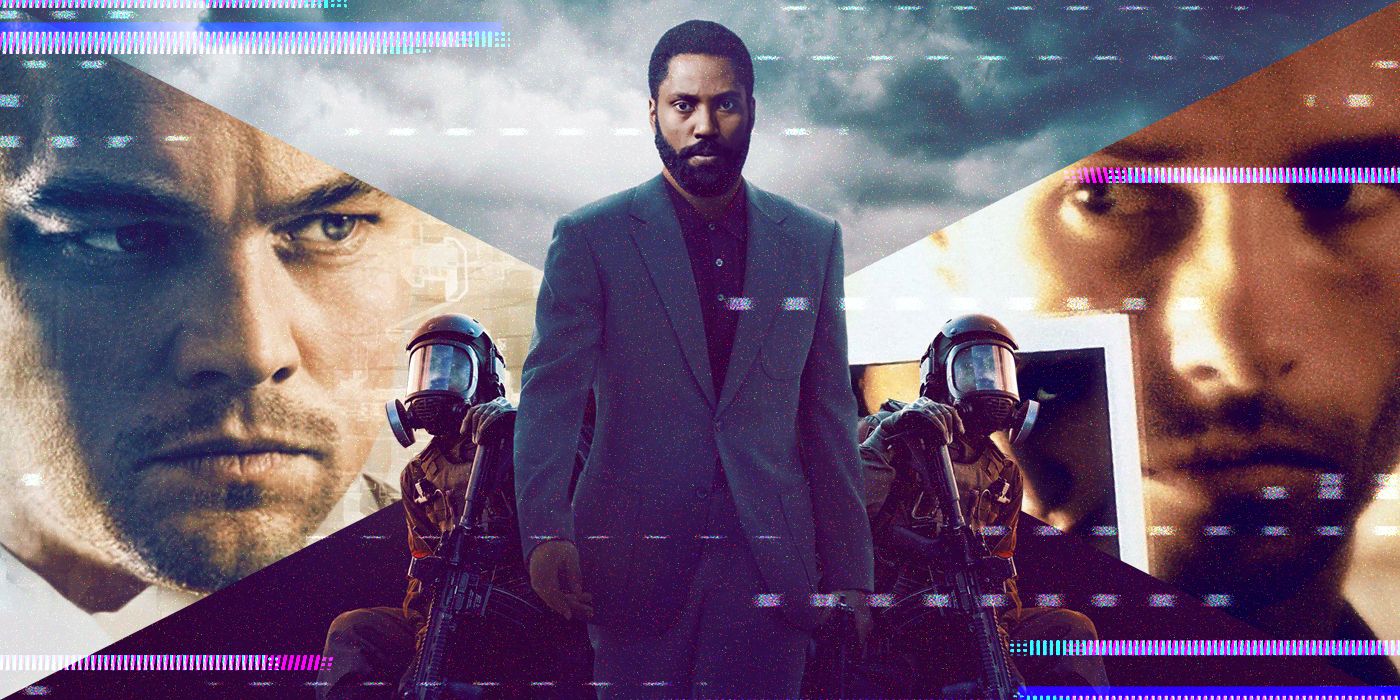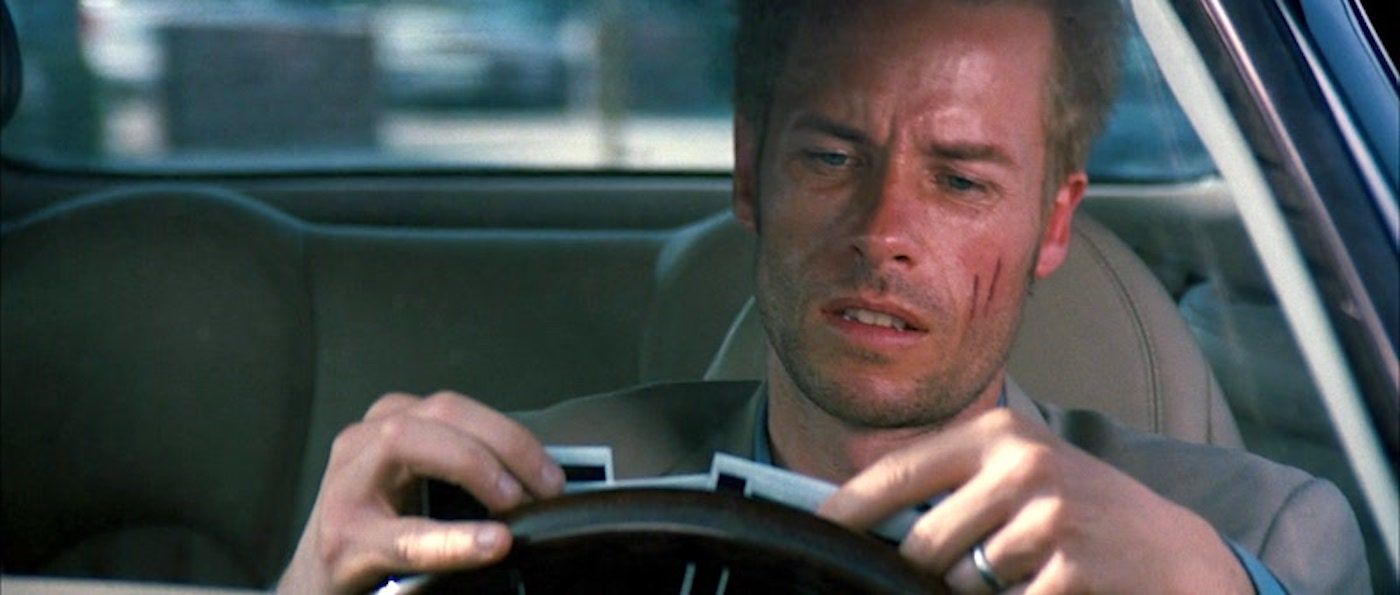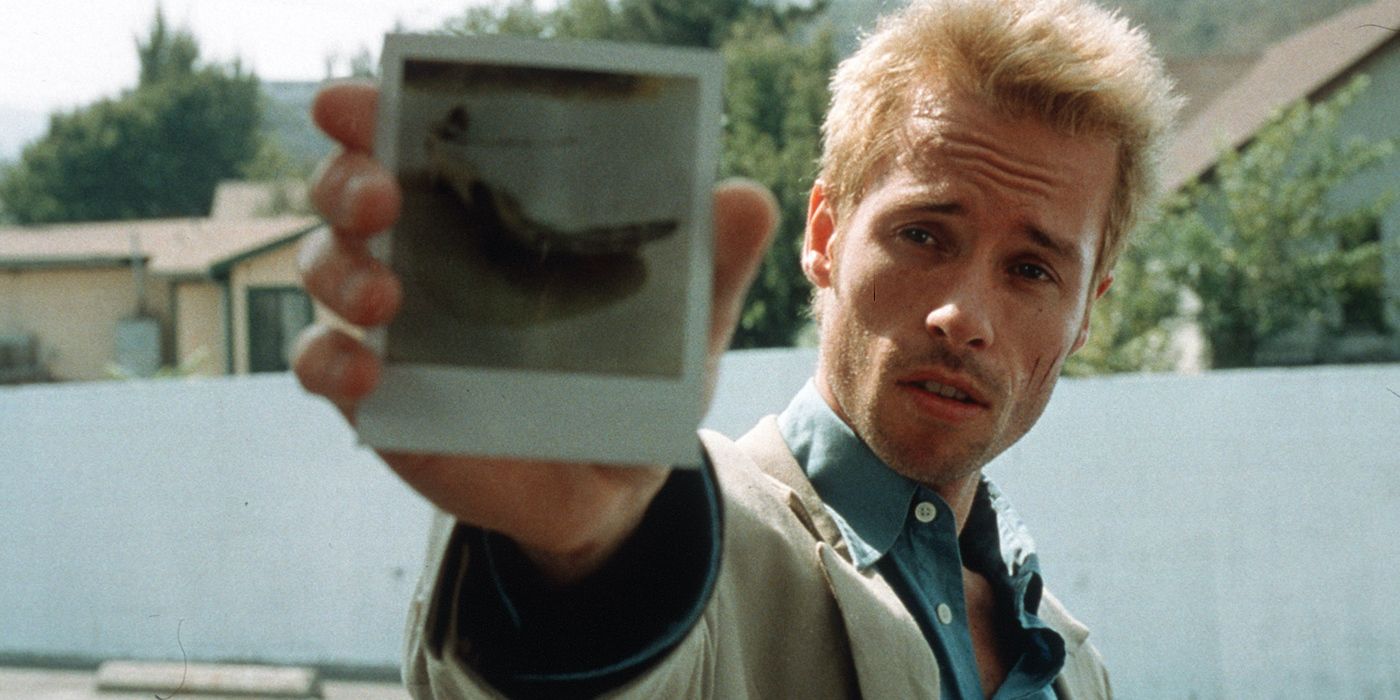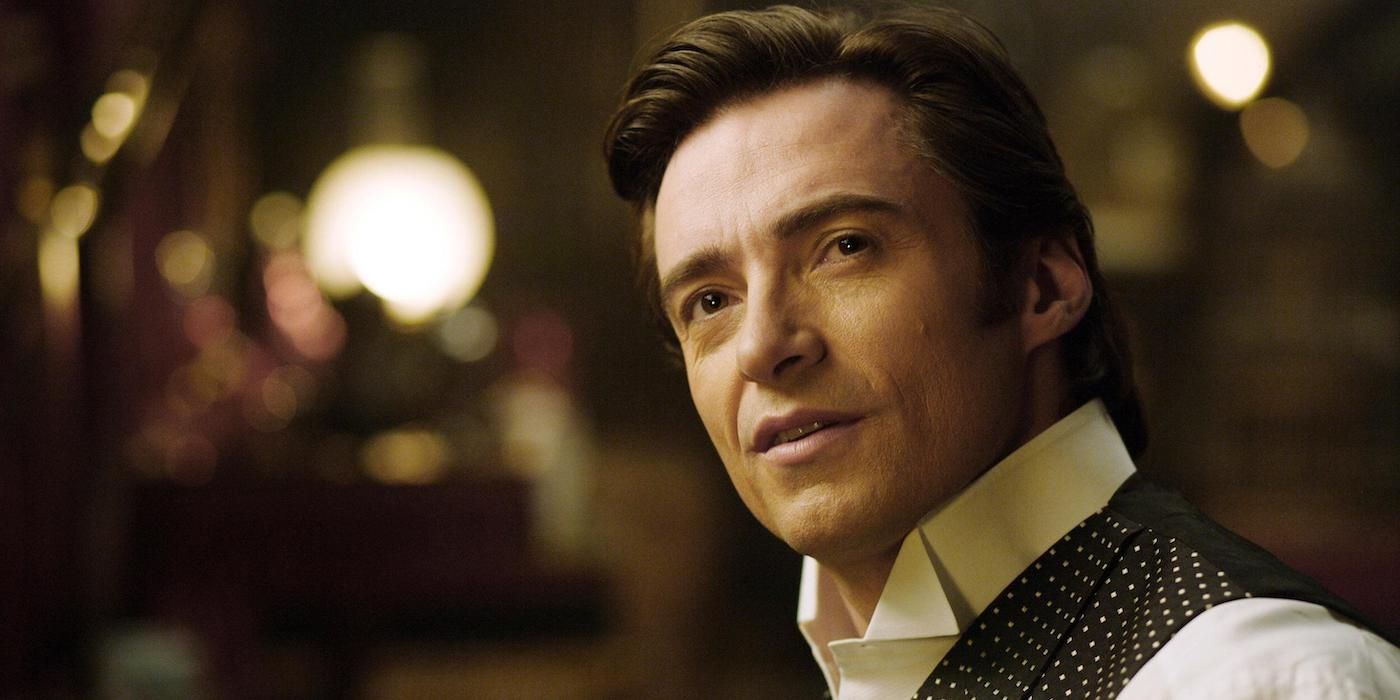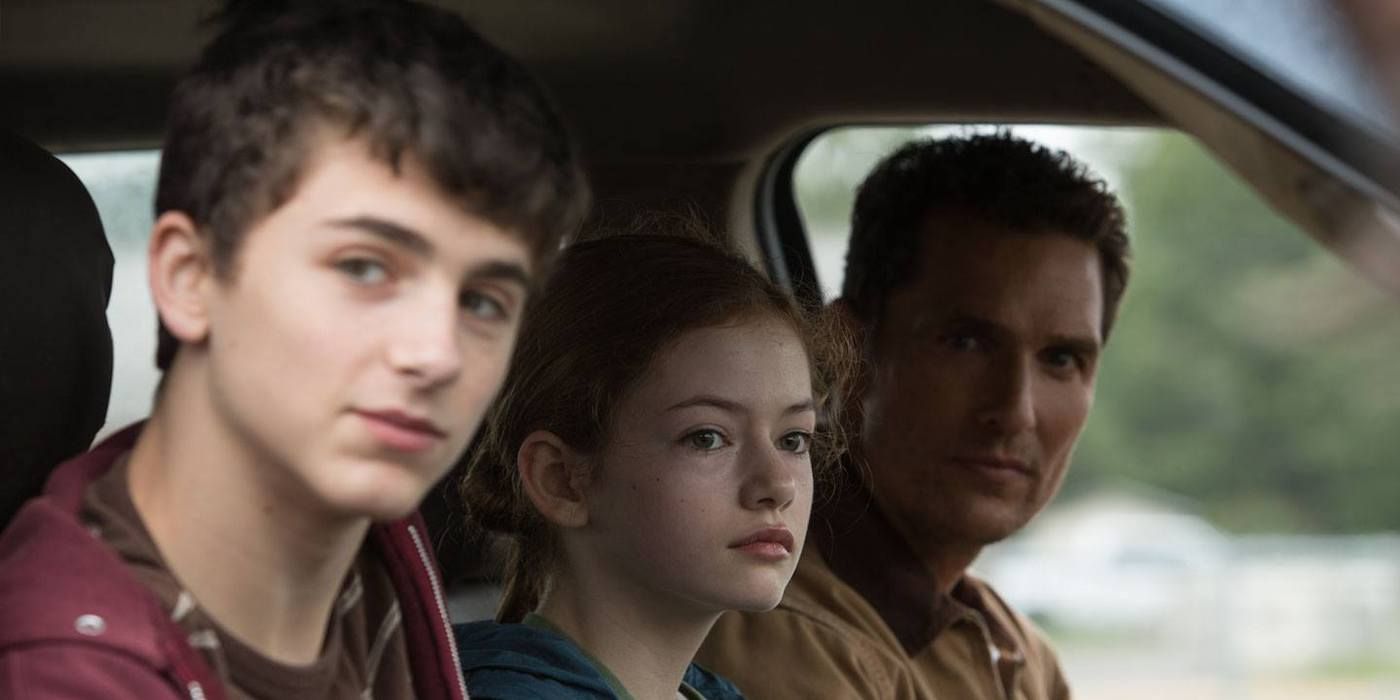At this point in his career, just the words Christopher Nolan evoke a specific type of movie: a huge scale, a twisty plot, and a sure-handed approach to both action and drama. Beyond these distinct stylistic and narrative touches, Nolan's films often feature characters who become programmed in some fundamental way. Nolan sets these characters on narrative paths which raise questions about free will versus predetermination. From the amnesiac Leonard Shelby (Guy Pearce) in Memento, to the nameless Protagonist (John David Washington) in Tenet, Nolan often uses his characters to explore the area between choice and fate in compelling and unexpected ways.
Let’s take a look at the programmable people found in Christopher Nolan’s films.
Narrative & Choice
First, let’s examine the illusion of choice in a narrative. This central question of free will versus determinism — are we in control of our actions or has every outcome already been determined? — has already been answered for characters in a movie. Even as they agonize over what to do next, their choices have been pre-ordained by the narrative’s designer.
Certain mediums can push the limits of these storytelling choices, with open-world RPGs like Fallout and The Elder Scrolls giving the players more control over the shape of the overall narrative. Still, the nature of a story will narrow the choices down to a linear — and often binary — set of options for the participants.
Nolan’s twistier films play with this idea, sending their characters on paths which must inexorably turn back on themselves.
Leonard Shelby - Memento
Even Nolan’s first feature, the micro-budget Following, centered on a narrative loop of sorts. The unnamed protagonist (Jeremy Theobald) takes to following strangers around, keeping his distance until one his marks confronts him and draws him into a web of deceit and crime. “Cobb” (Alex Haw) — a name Nolan will use again — has been following this young man and designs a trap that exploits this pattern of following. Nolan hones and expands his non-linear approach to narrative in Memento, his second feature and the film that really got everyone’s attention.
In a story famously told in reverse, former insurance investigator Leonard Shelby (Pearce) lost his ability to make new memories after an attack which left his wife raped and murdered. In order to get through his days, Leonard has programmed himself to focus on his hunt for her killer. He has tattooed various clues all over his body, and the audience discovers the “facts” of his case right along with him. However, as the story progresses (or regresses, depending on how you look at it), we learn that Leonard has been used by crooked cop Teddy (Joe Pantoliano) to take out a local drug dealer who had nothing to do with his wife’s death.
Like a wind-up doll, Leonard is single-minded when presented with a path. He enters his own loop, and once he becomes wise to how he’s been manipulated, Leonard programs himself to eventually target Teddy. Memento is perhaps the most overt example of how Nolan constructs a narrative loop which essentially deprives his protagonist of any choice. Leonard has already set himself on a deterministic path, a journey made all the more fascinating by Nolan’s non-linear trickery.
Robert Angier/The Great Danton - The Prestige
Loosely based on the 1995 novel by Christopher Priest, Nolan’s 2006 The Prestige follows two stage magicians in 19th century London. After a tragic accident, the friendship between the technically-gifted but unflashy Alfred Borden (Christian Bale) and natural showman Robert Angier (Hugh Jackman) turns into a bitter rivalry. In his obsessive quest to develop an illusion that will best Borden, Angier turns to one of history’s great scientific geniuses, Nikola Tesla (David Bowie), to develop a machine that can counter Borden’s incredible Transported Man trick.
The audience eventually learns — in one of the most horrifying scenes Nolan has ever directed — that Tesla’s device creates copies of whoever stands beneath its lightning rods. The device deposits that copy a certain distance away from the original, and as the competitive, jealous Borden sneaks backstage during one of Angier’s performances, a copy drops into a vat of water and his rival seemingly drowns before his eyes.
In his relentless quest for revenge, Angier creates a terrible loop defined by his own suffering. He blames Borden for the tragic death of his wife (played by Piper Perabo), who drowned due to Borden’s mistake. Angier has programmed himself into an endless cycle of self-punishment by drowning repeatedly. Since he can split his consciousness multiple times, Angier can share his wife’s final moments over and over again while reappearing as a copy. It is still a self-contained loop, however, an existential paradox which still stands as Nolan’s darkest dénouement.
Cobb and Mal - Inception
Even Nolan’s Batman movies did not require the level of disbelief-suspension Inception demands. Dom Cobb (Leonardo DiCaprio) is an “extraction” expert, capable of infiltrating someone's dreams and stealing vital information. Cobb is also an international fugitive, wanted for the murder of his wife, Mal (Marion Cotillard), who once joined him in exploring the very edge of dream consciousness. A businessman named Saito (Ken Watanabe) offers Cobb the chance to wipe away his fugitive status, in exchange for the “inception” of an idea in the mind of a rival, Fischer (Cillian Murphy). This means implanting an idea not his own deep into Fischer’s subconscious.
Nolan takes an interior approach to his programmable characters with Inception. The puzzle of Memento depended on an entirely exterior understanding of the story. Here, the success of Cobb’s mission is tied to things in his past that he must repress. When Ariadne (Elliot Page), one of his recruits, uncovers these secrets, the audience learns that his problems are tied to Mal’s death. While sharing dream consciousness with her, Cobb had to implant an idea which fundamentally altered her perception of reality. They spent so long in the dreamworld that Mal believed it was real. Cobb placed her “totem” — the film’s famous perpetually spinning top — inside a symbolic safe. This convinces her to leave the dream reality, but upon waking, Mal believes the real world is still a dream.
The dire consequences of Cobb’s programming leads Mal to attempt to force Cobb to either join her in death or have the world believe he killed her. Cobb’s manipulation came off as a fascinating existential exercise at the time of the film’s release, but in retrospect becomes an uncomfortable example of some rather extreme gaslighting on a subconscious level. In Memento, Leonard Shelby programs himself, and one could argue that his target really does deserve at least some kind of comeuppance. Cobb’s good intentions nevertheless result in a shadow of Mal embedded in Cobb’s subconscious, sabotaging any attempt at designing new dream spaces. The film’s final image — Mal’s totem not quite toppling over — naturally begs whether Dom has returned to reality. Is it possible that his subconscious version of Mal could have programmed him in the same way? This would seem a fitting consequence for this kind of dangerous programming.
Cooper & Murph - Interstellar
Interstellar was Nolan’s hotly anticipated 2014 follow-up to The Dark Knight Rises. Like 2020’s Tenet, Interstellar is dense and knotty, a sci-fi epic in the mold of 2001: A Space Odyssey, but grounded by Matthew McConaughey’s earnest performance as Joseph “Coop” Cooper, a former NASA pilot turned farmer. This near-future Earth is plagued by widespread blight, but after a strange gravitational anomaly sends he and his daughter Murph (played as an adult by Jessica Chastain) out looking for coordinates, Coop stumbles on the remains of NASA and their moonshot plans for saving humanity.
Coop pilots a crew through an artificially-placed wormhole and into a different galaxy, where NASA’s scientists — including Professor Brand (Michael Caine) and his daughter Dr. Brand (Anne Hathaway) — believe they’ll find habitable planets for a human colony. However, the closer they get to a black hole called Gargantua, they become disconnected from linear time. For every hour that passes for them, whole years go by on Earth. Once he’s sucked in, Coop finds himself in an extradimensional realm created by future humans capable of manipulating space-time.
Within this tesseract, Coop sees that he himself is the force manipulating gravity in young Murph’s room, revealing the coordinates of the NASA project. Back on Earth, Professor Brand and the adult Murph needed data from inside a black hole to complete an equation that could send the rest of humanity into the stars. Coop transmits that data from inside the singularity, in a three-dimensional construct of time itself. He creates a causal loop, where the events that have yet to happen set the story in motion before we understand the full scope of the narrative. Coop himself sets he and his daughter on the path to humanity’s salvation. It’s a classic, if well-worn, time-travel trope, but Nolan successfully pulls it off. As with The Prestige, Interstellar’s main narrative loop is given emotional heft. Here, however, the “quantifiable” element of Coop’s love for his daughter inverts Angier’s toxic self-hatred, becoming something positive and inspiring.
The Protagonist - Tenet
Nolan’s apparent fascination with paradoxes finds its densest, trickiest form with Tenet. Nolan’s fascination with the concept of simultaneous creation and perception also finds its most crystallized, ambitious form. A CIA operative known only as The Protagonist (John David Washington) enters the shadowy world of Tenet, a palindrome evidently symbolizing both an organization and a philosophy. The story revolves around a strange Cold War between the past and the future. A process known as “inversion” reverses the entropy of an object or person, causing them to move backward through time. Unknown factions from the future can send people, weapons, and equipment into the past.
The intricate, labyrinthine plot of Tenet has inspired many a thinkpiece across the blogosphere. The consensus runs from bafflement to annoyance bordering on hostility. For all its flaws (the dialogue often buried in the sound mix is just one of them), Tenet employs the causal loop device in perhaps its purest form. Halfway through the film, the Protagonist and his handler, Neil (Robert Pattinson), must travel back and replay the events from a different point of view. Nolan relies on a Macguffin for Tenet (a plot device he usually tends to avoid), a machine called the Algorithm with which the vile Russian arms dealer Sator (Kenneth Branagh) plans to annihilate the present and past (at the future’s behest).
Inception and Interstellar flirted with paradoxes, but Tenet’s entire construction depends on a big one. Sator fails, and we learn that it was a future version of the Protagonist who set the events in motion. When the audience learns that a certain masked character the Protagonist battled turned out to be his future self, Nolan reveals that this paradoxical causal loop is a closed system. Whereas Interstellar’s loop relies on the outside influence of far-future humans, the malevolent version of the same in Tenet are incidental. The Protagonist is the alpha and omega of this narrative. While Nolan strips this story of the emotional stakes at the core of Coop and Murph’s connection, he also presents an allegory for the narrative experience itself. Naming Washington’s character the Protagonist took a lot of gall, but when seen as an experiment in telling a story in which the characters were always bereft of any other choices, we see him as both the creator and the audience.

